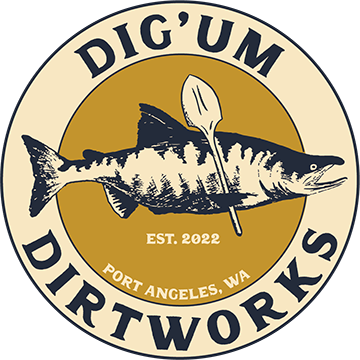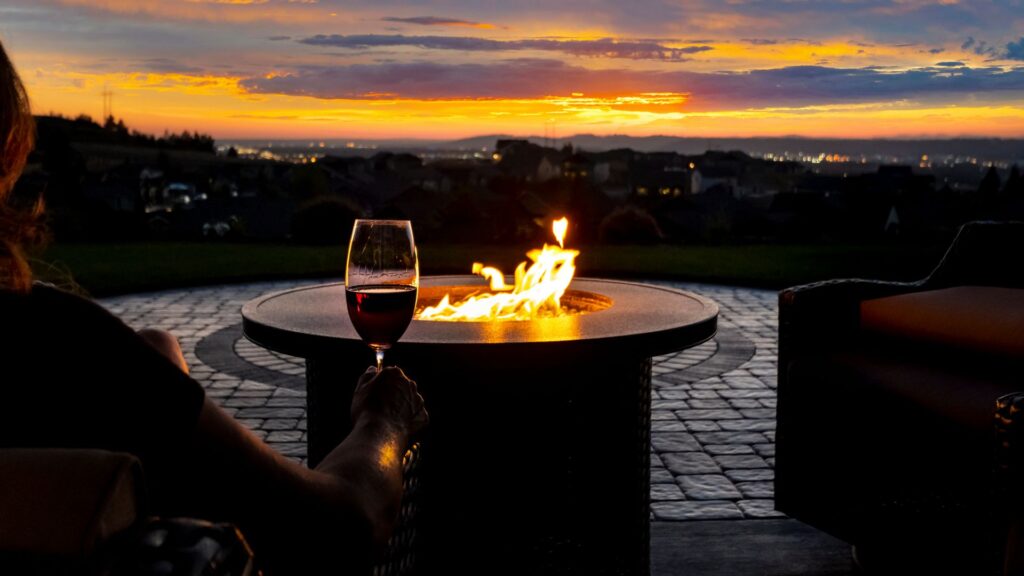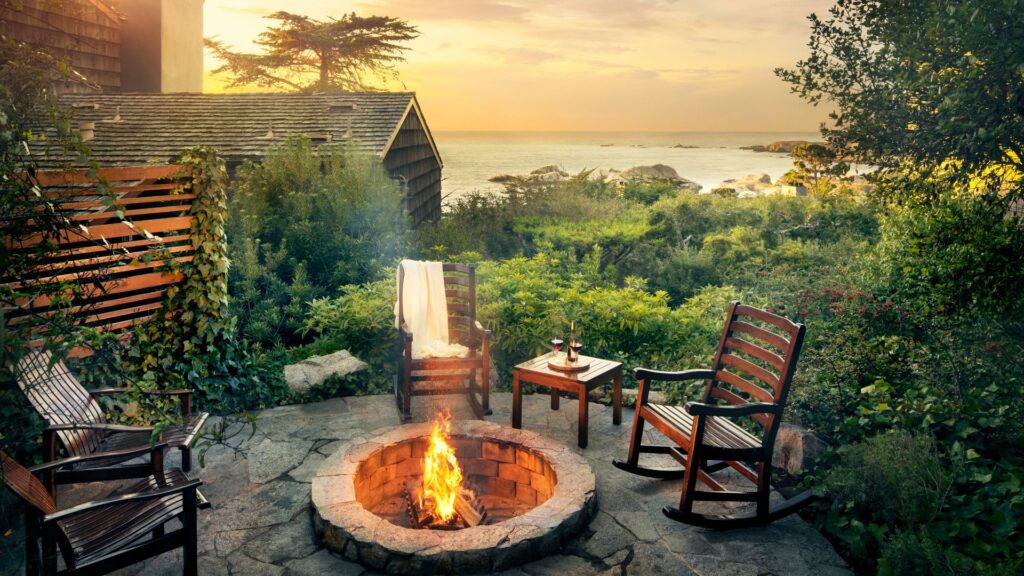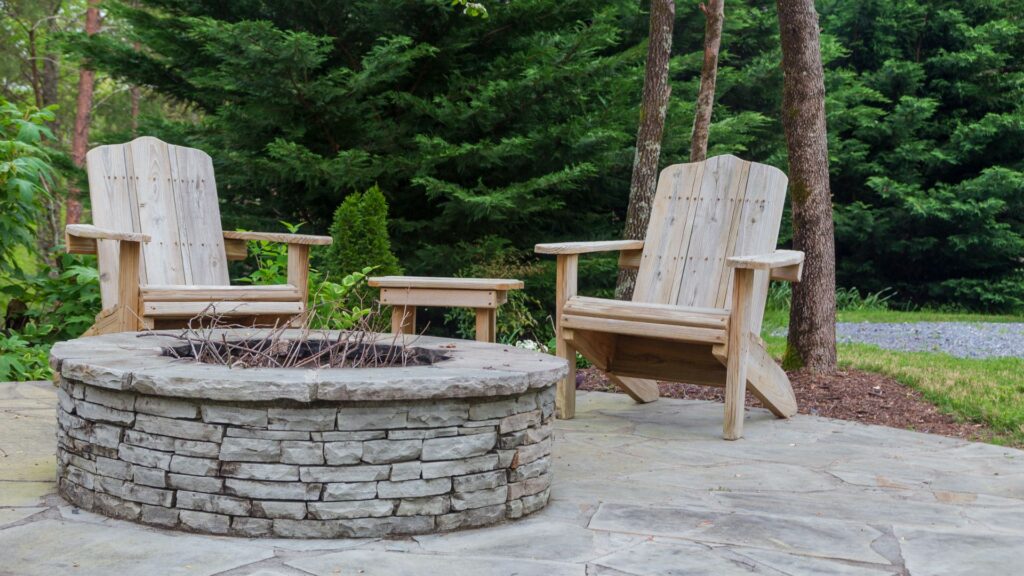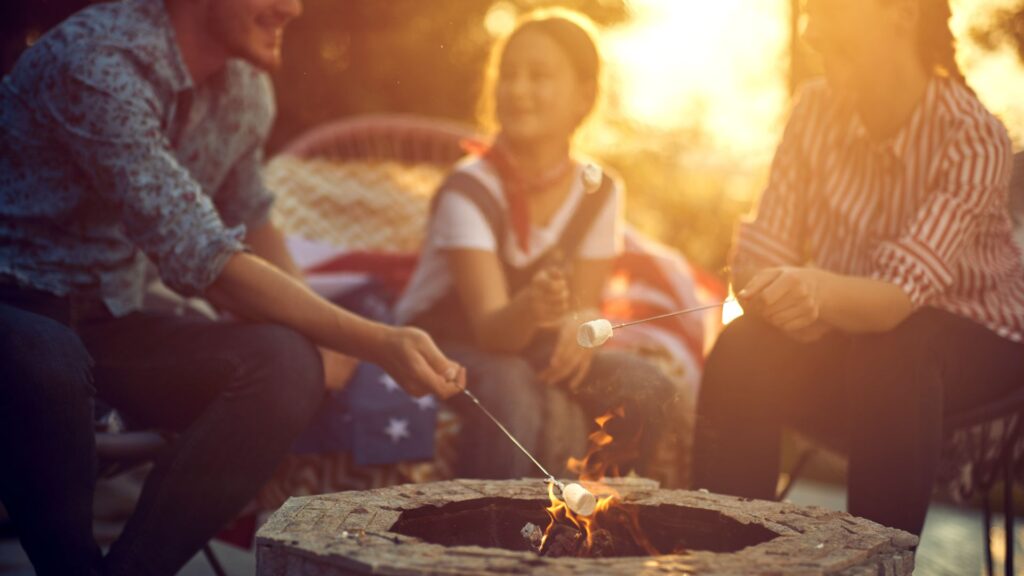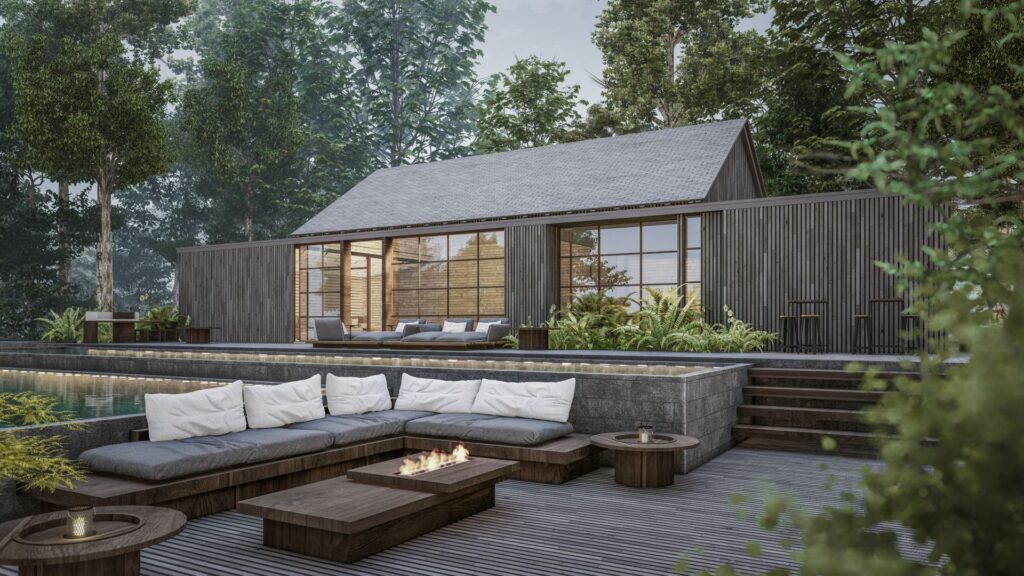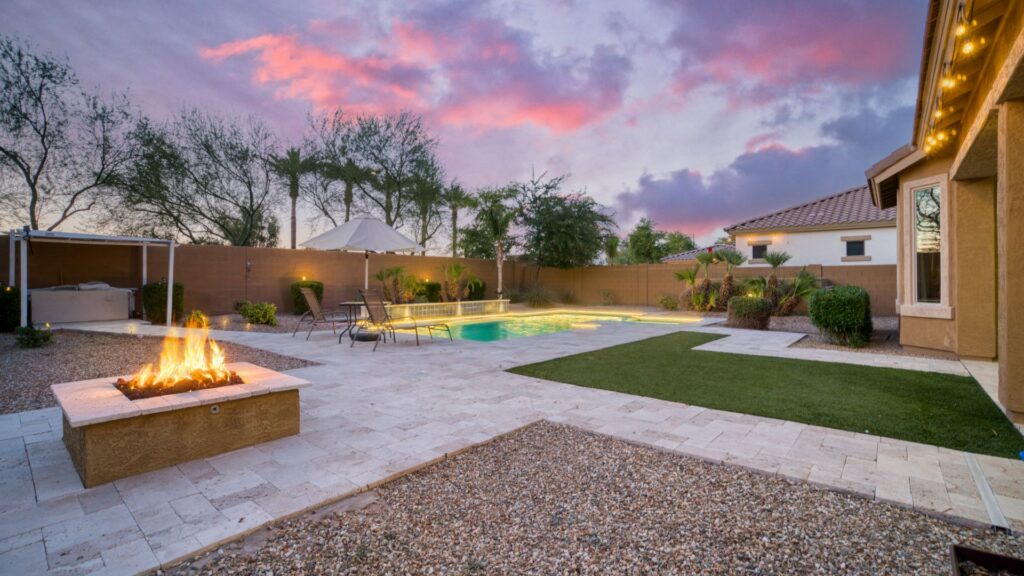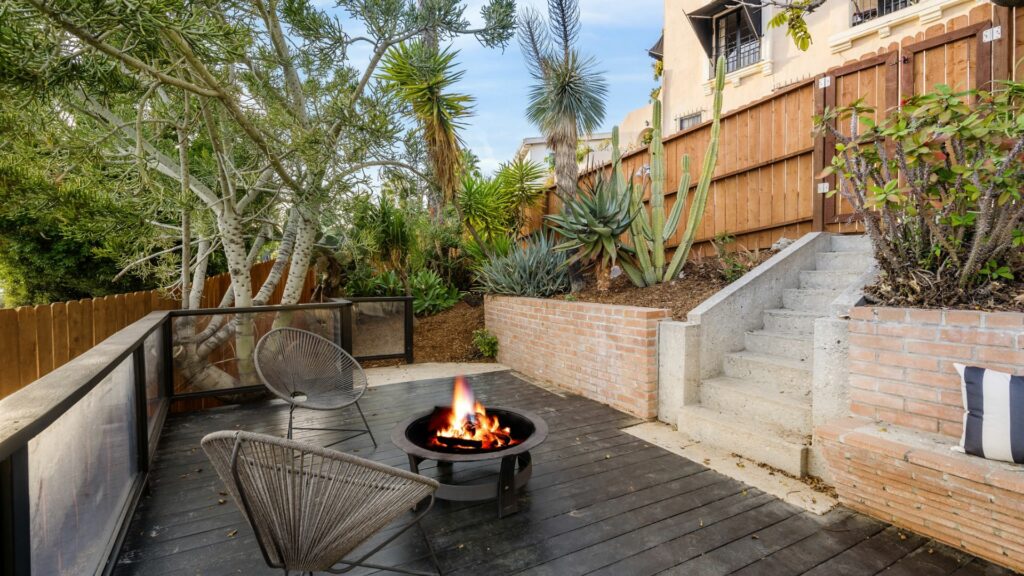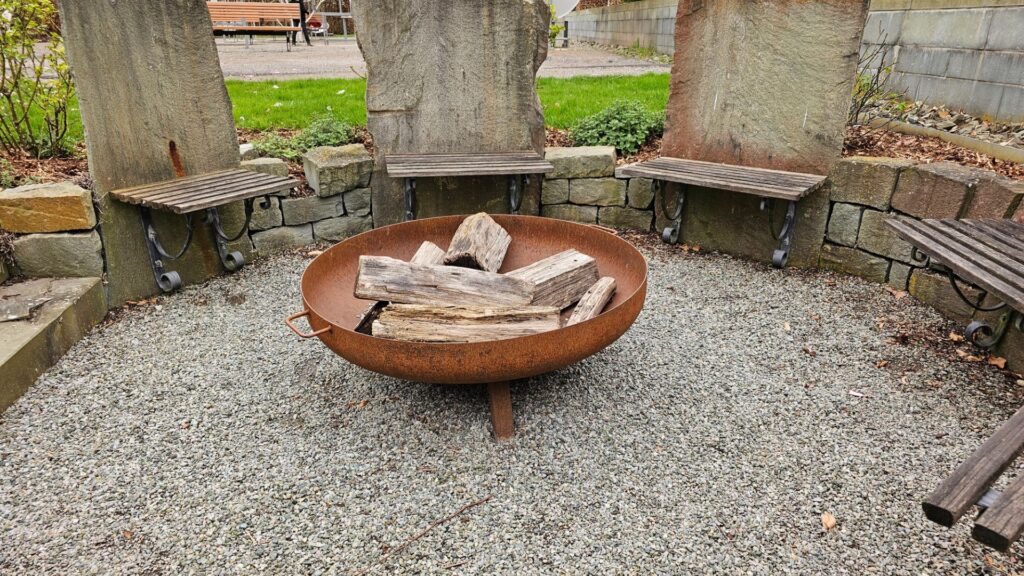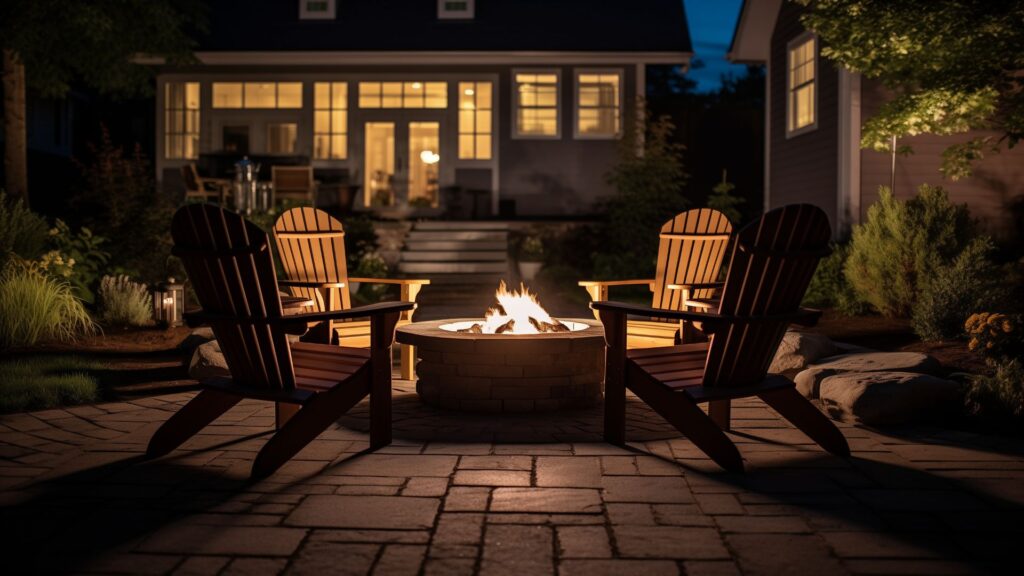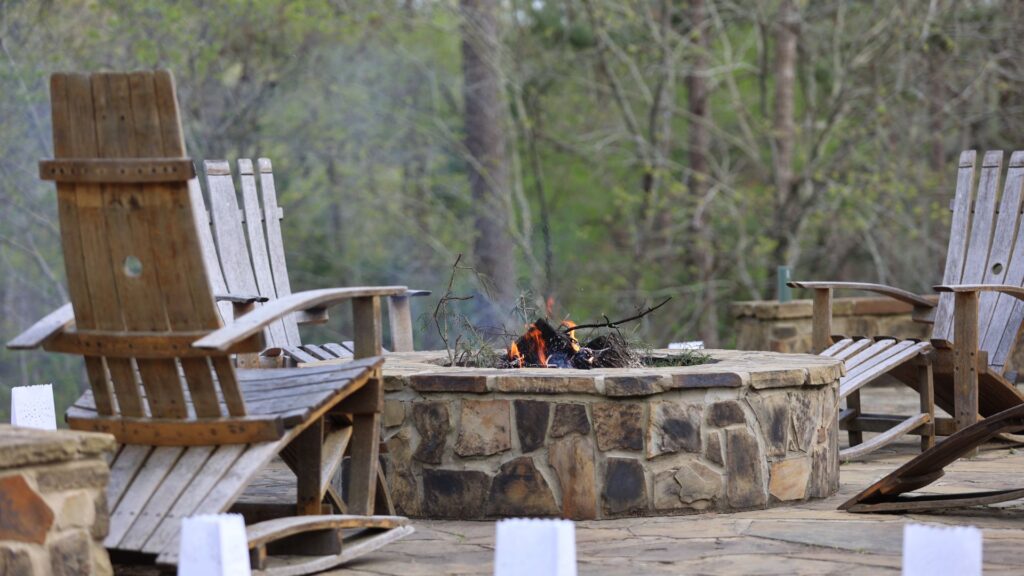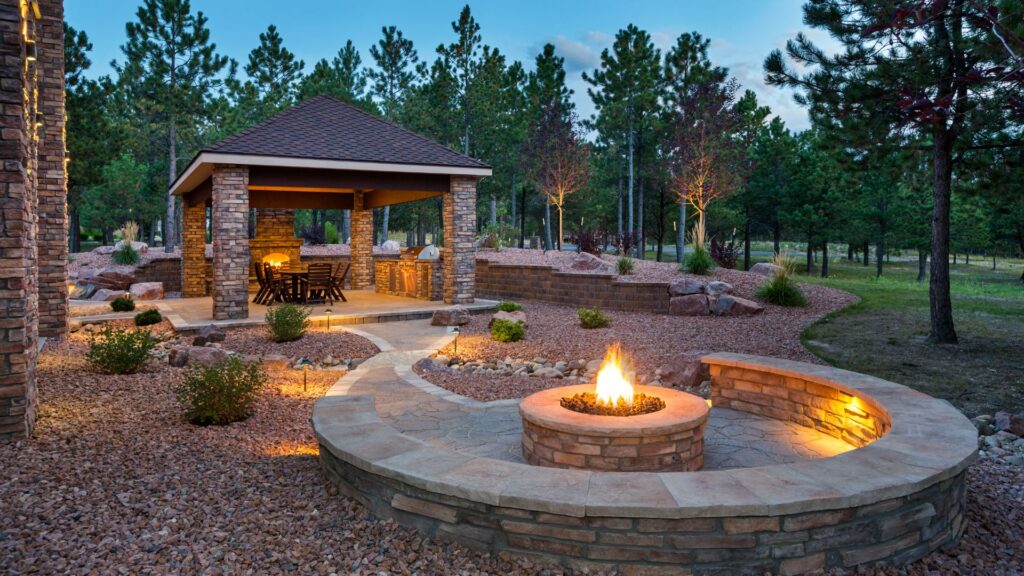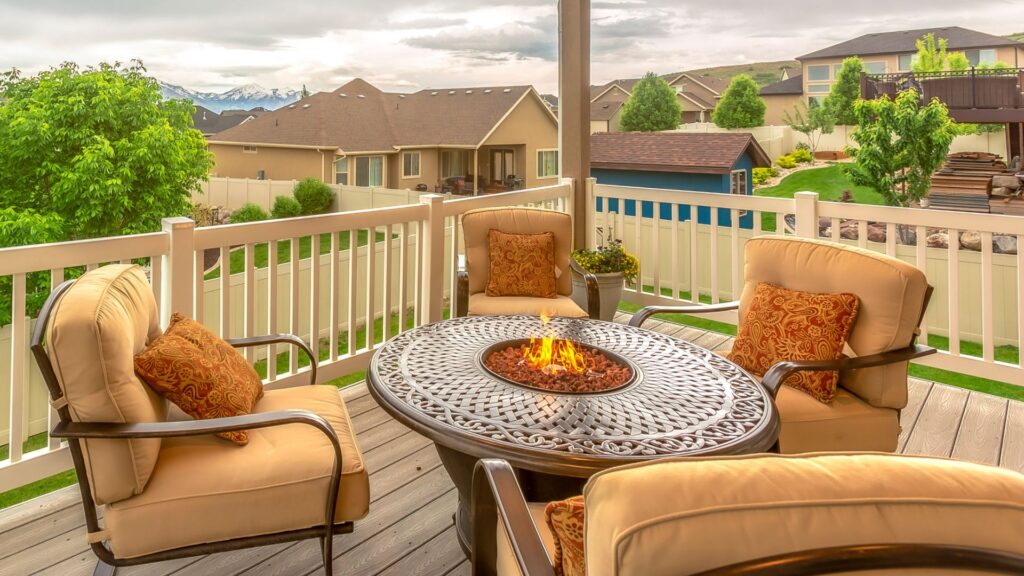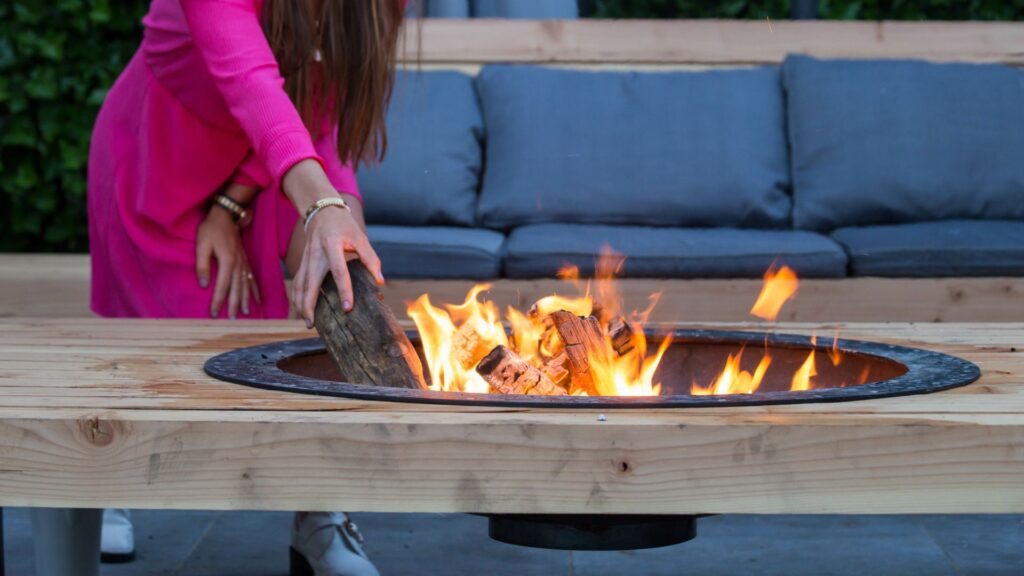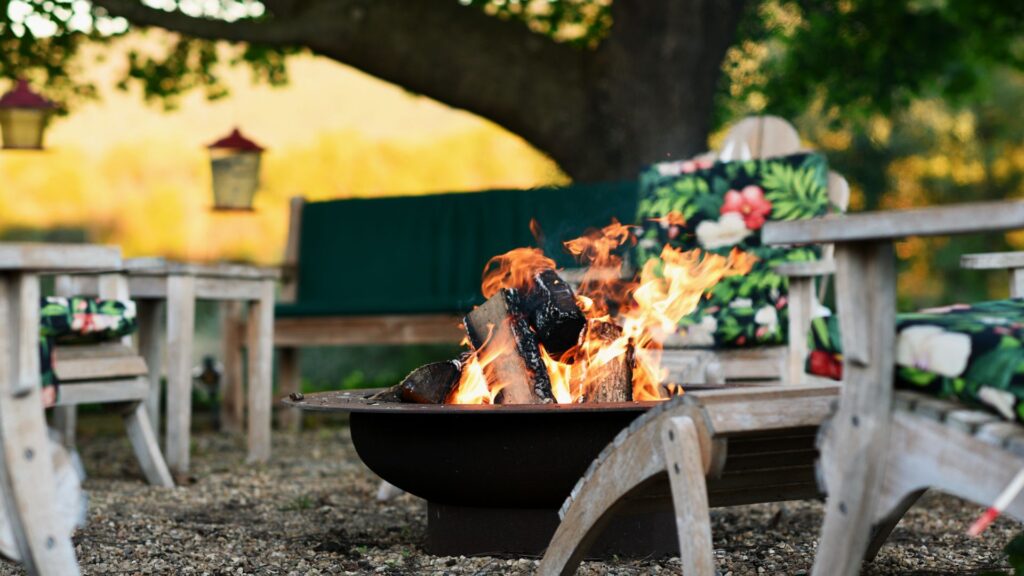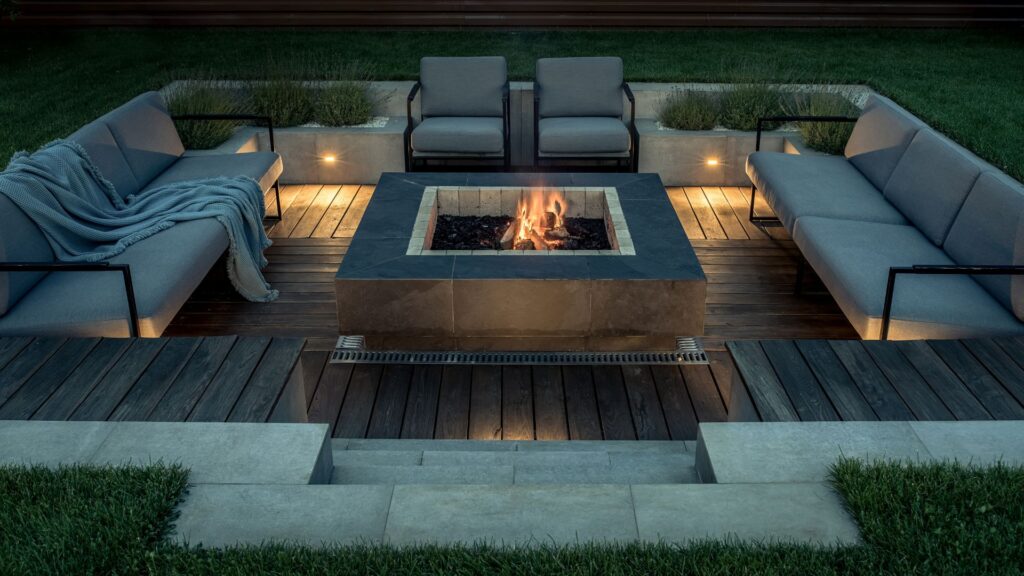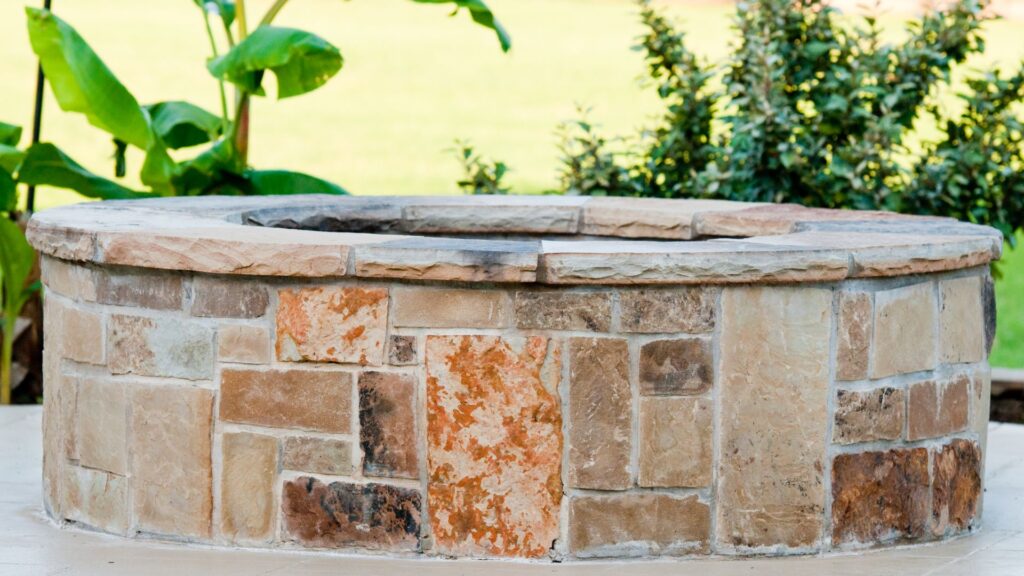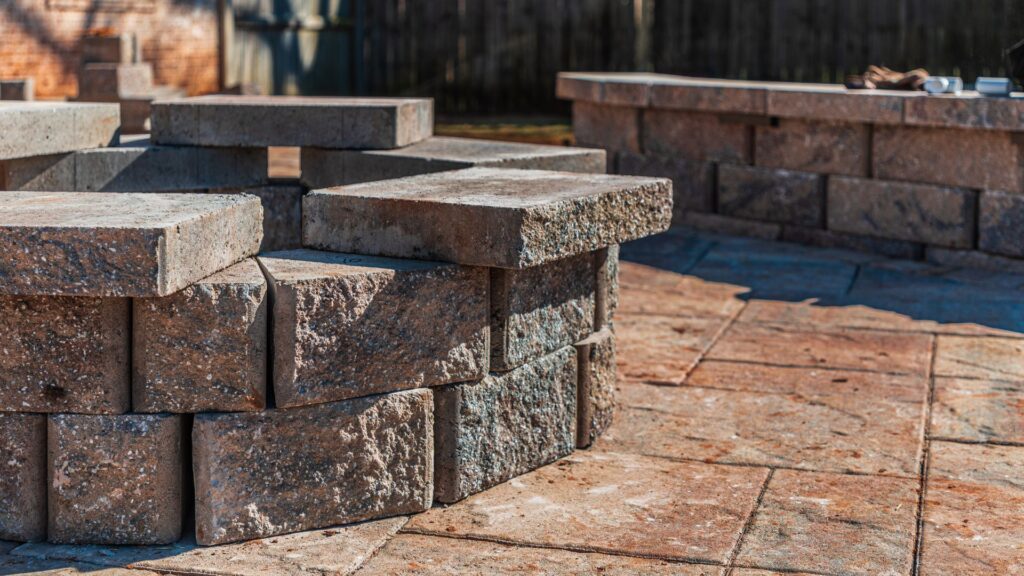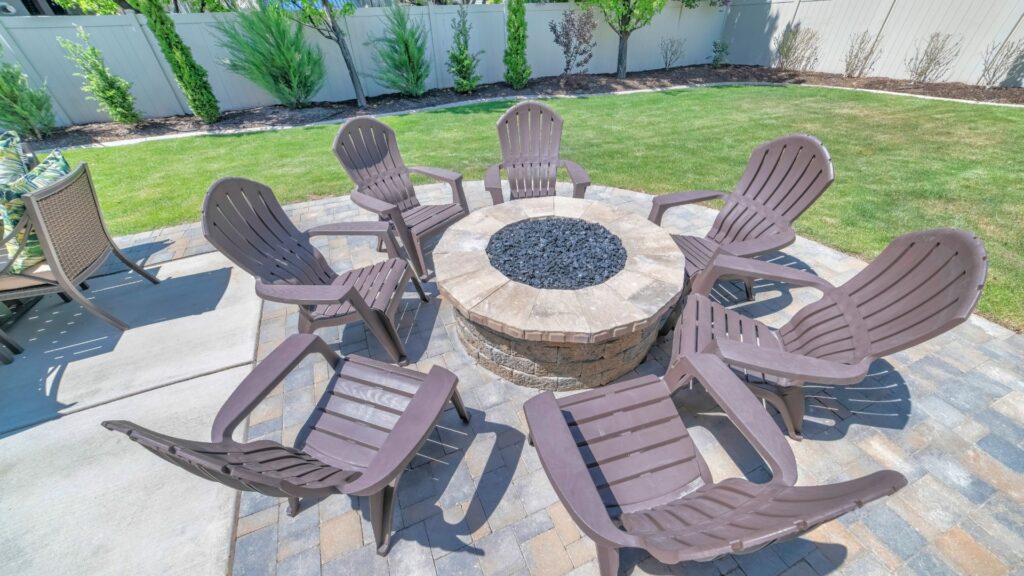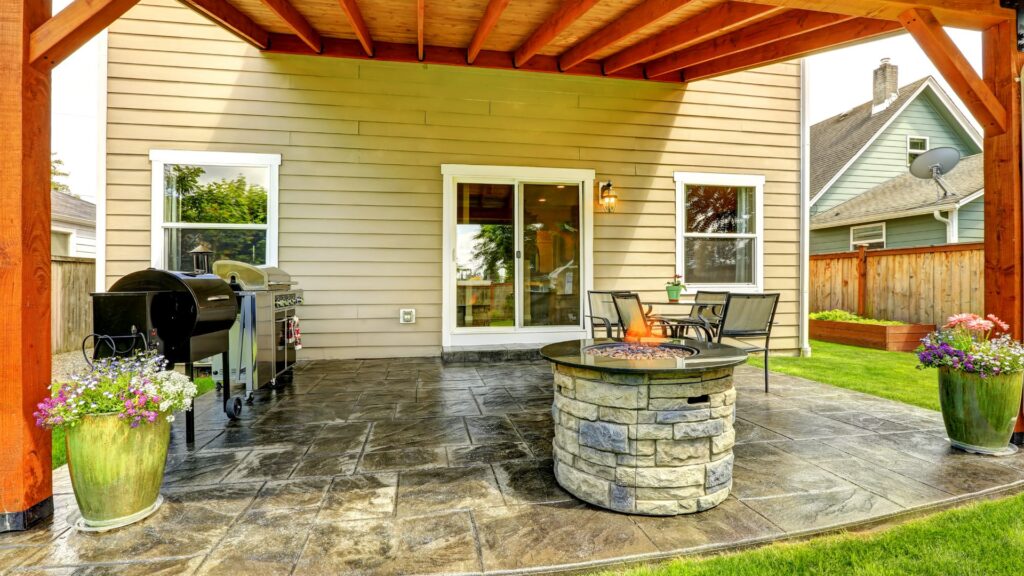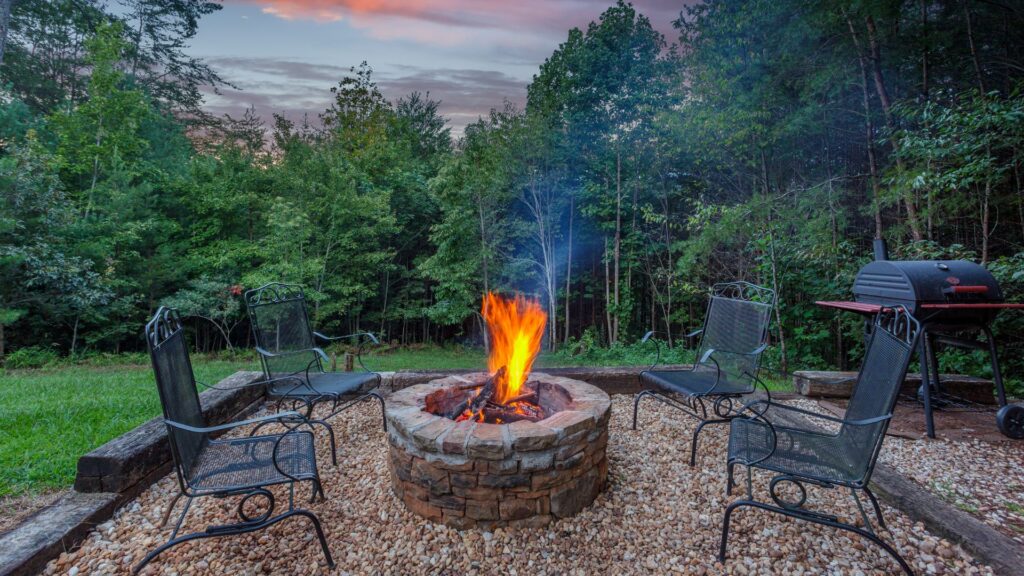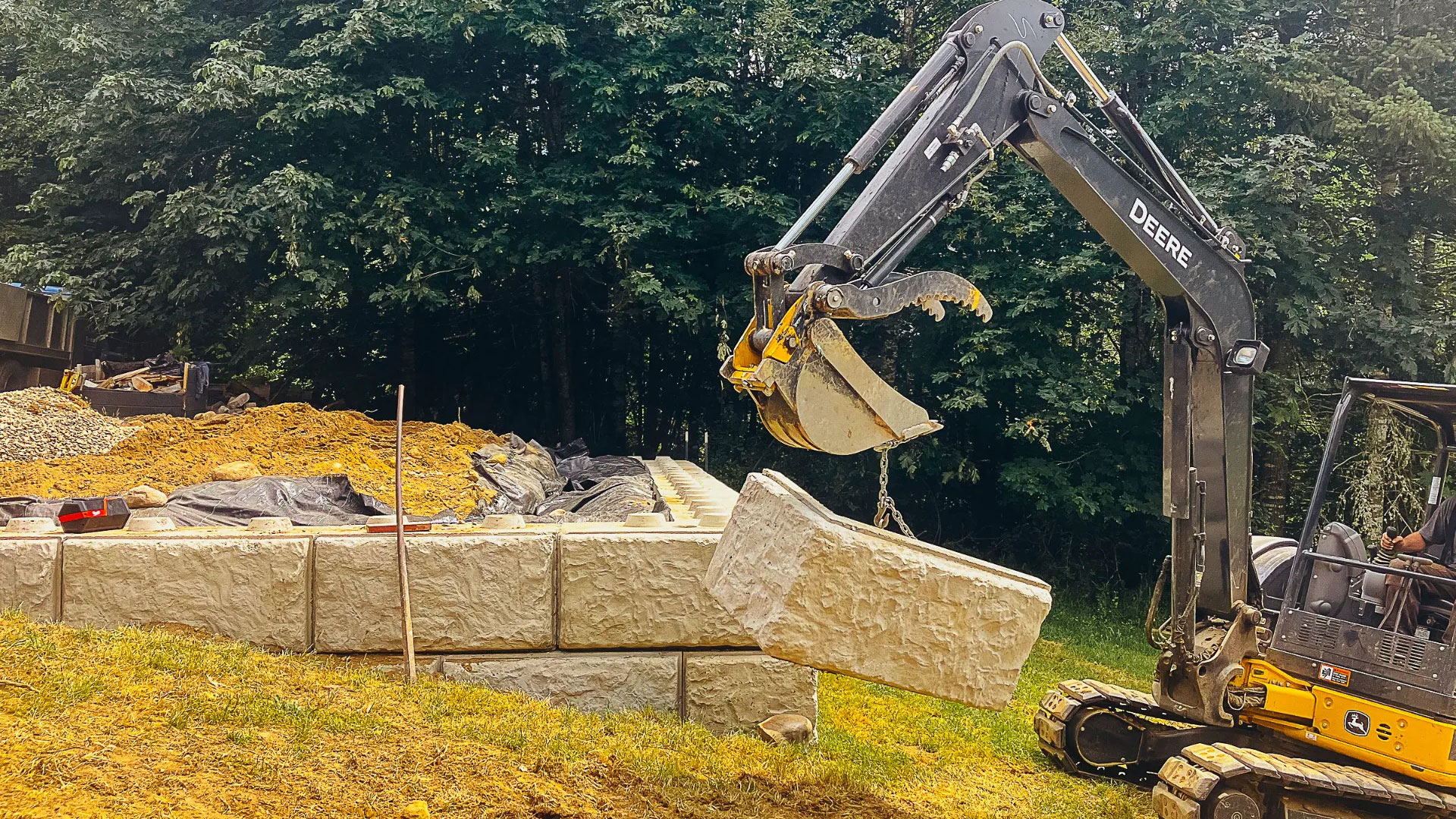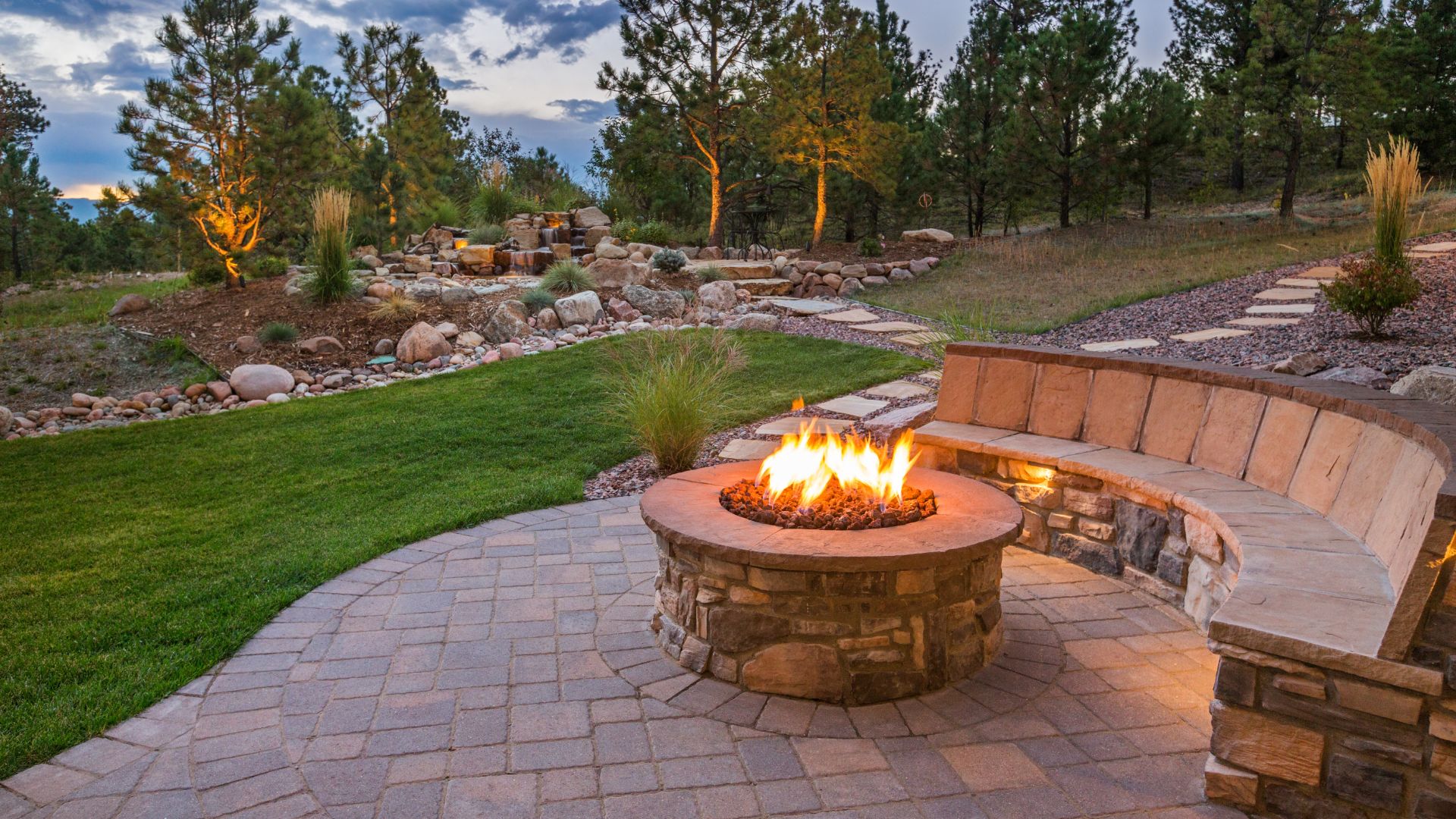
Fire Pit Landscaping Ideas
Incorporating a fire pit into your outdoor space not only enhances its visual appeal but also boosts the functionality of your outdoor area while also repelling mosquitoes. Opting for a stone fire pit or a metal fire pit can significantly elevate the aesthetic appeal of your landscape design. Effective fire pit landscaping encompasses more than just the installation of the pit, it involves the strategic integration of the fire pit area with outdoor furniture, garden beds, and potentially water features to create a cohesive and inviting outdoor room.
Fire pits offer a unique combination of warmth from a crackling fire and a perfect setting for roasting marshmallows, making them a central feature in outdoor living spaces. Depending on the choice between concrete fire pits, sunken fire pits, or even fire bowls, each design caters to different backyard fire pit ideas that complement both large and small spaces. The goal is to craft an outdoor fire pit area that not only serves as a focal point but also enhances the overall backyard design, transforming any simple backyard into a backyard oasis capable of hosting gatherings or providing a tranquil retreat.
Fire Pit Landscaping Design Inspiration
Romantic Retreats
Romantic retreats focus on creating an enchanting atmosphere, ideal for quiet evenings and intimate gatherings. Features like Moroccan floor cushions, seaside themes, or beachy fire pits enhance the charm and allure, making these settings perfect for couples seeking a tranquil escape under the stars.
Family-Friendly Designs
Family-friendly designs prioritize safety and accessibility, incorporating features like fire pits with kid seating or installations on astroturf to ensure a secure environment. An outdoor fireplace serves as a central gathering spot, fostering family interactions and activities in a comfortable setting.
Modern Minimalism
Modern minimalism emphasizes clean lines and uncluttered spaces, using elements like minimalist garden beds and simple column fire pits. Designs often feature geometric shapes and a monochromatic palette, creating a sleek and contemporary outdoor area that complements modern architectural styles.
Rustic Themes
Rustic themes evoke a sense of warmth and nostalgia, often utilizing materials like aged steel and natural stone. Features like rustic steel fire pits or woodsy retreats blend seamlessly with natural landscapes, offering a robust, earthy aesthetic that is both inviting and comforting.
Cultural Flavors
Cultural flavors infuse the design with elements inspired by various global influences, from Southwestern motifs to tropical vibes. These styles incorporate vibrant colors, unique patterns, and traditional crafts to create a distinctive and culturally rich outdoor environment that feels both exotic and homely.
Safety Considerations
When incorporating a fire pit into your landscape design in Washington State, it’s important to consider both placement and safety regulations to ensure compliance and safety. Here are some key points based on Washington State codes and regulations:
Placement and Clearances
- Fire pits must be positioned at least 25 feet away from any structures or combustible materials. This distance is crucial to prevent fire hazards and ensure safety within your outdoor space (CKFR)
- In Spokane, fire pits should not exceed 3 feet in diameter and must be kept at least 25 feet away from buildings (HomeSteady).
Permits and Restrictions
- Some areas in Washington, particularly urban growth areas, have stricter controls on outdoor burning. For example, in these areas, only recreational or tumbleweed fires are allowed, and even these have size restrictions (Washington State Department of Ecology).
- In Central Kitsap, recreational fires are permitted without a permit, but they must be 3 feet or less in size and situated 25 feet away from any structures. Additionally, only charcoal or dry firewood may be used (CKFR).
Material and Fuel
- The type of material burned is also regulated, with natural vegetation like leaves and prunings being allowed, whereas burning processed materials or garbage is prohibited (Washington State Department of Ecology).
- In Spokane, only untreated wood, propane, charcoal, or natural gas are permitted as fuel for fire pits (HomeSteady).
Safety Precautions
- It is essential to have a responsible person attend the fire at all times, equipped with means to extinguish the fire, such as a shovel and a bucket of water or a connected water hose (Home – King County, Washington).
- Ensure the fire pit area is clear of overhanging branches and at least 10 feet away from vegetation to minimize the risk of fire spreading (Home – King County, Washington).
Seasonal and Weather Considerations
- Be aware of temporary burn bans, which can be imposed during periods of high fire risk due to weather conditions. These bans are typically in response to specific environmental conditions and can affect when and how you can use your fire pit (Home – King County, Washington).
Understanding and adhering to these guidelines will help you create a safe and enjoyable outdoor fire pit area. Always check with local fire departments or municipal offices for the most current regulations and any specific requirements that may apply to your area.
Integrating Your Existing Landscape Design
Integrating a fire pit into your landscape requires thoughtful consideration of how it will blend with and enhance your garden and outdoor space. Especially considering the geographic diversity in our state, from landscaping in Sequim to east of the Cascades, the value of being intentional and thoughtful with fire pits cannot be overstated. Here are some strategies for effectively integrating fire pits through garden design, the use of stone and pavers, and the incorporation of special features:
Garden Integration
Purposeful Planting: Surround your fire pit with non-flammable and low-maintenance plants to create a natural, inviting environment. Choose plants that can tolerate dry heat and do not drop leaves frequently, which can minimize cleanup and maintain a tidy area.
Layered Landscaping: Implement a multi-tiered landscaping approach where shorter plants are placed closer to the fire pit and taller ones further back. This creates depth and a lush backdrop that enhances the aesthetic appeal of your fire pit area.
Seasonal Considerations: Include plants that offer visual interest across different seasons—flowering perennials for spring and summer, colorful shrubs for fall, and evergreens for winter.
Stone and Paver Enhancements
Paving for Safety and Style: Use non-flammable materials like stone or concrete pavers around your fire pit to create a fire-safe zone. This hard barrier helps prevent sparks or embers from igniting nearby plant material.
Visual Cohesion: Choose materials that complement the existing outdoor hardscape. For a seamless look, match the pavers to those used in other parts of your garden, such as pathways or patios.
Design Flexibility: Consider geometric or organic shapes for the paving area to match the fire pit’s design, whether it’s a circular patio, rectangular fire pit, or a custom shape.
Special Features
Lighting: Incorporate soft lighting around the fire pit to enhance its inviting glow at night. String lights or in-ground lighting can illuminate pathways leading to the fire pit and highlight nearby landscaping features.
Water Features: Adding a water feature nearby can amplify the sensory experience, contrasting the warmth of the fire with the soothing sound of water. This can be particularly effective in creating a tranquil outdoor room.
Seating Options: Build permanent seating like a stone bench or a corner sectional around your fire pit for added comfort and style. This not only provides ample seating for guests but also anchors the fire pit as a gathering place within the garden.
Material Selection
Choosing the right materials for your fire pit is crucial for both aesthetics and functionality. The most common materials used are stone, metal, and concrete, each offering distinct advantages and challenges.
Stone Fire Pits
Advantages
Aesthetic Appeal: Stone fire pits can be stunning, offering a natural look that complements any outdoor living space. Stone is versatile and can be used in various designs, from rustic to modern.
Durability: Stone is incredibly durable and withstands the elements well, which is essential for outdoor features.
Disadvantages
Cost: Depending on the type of stone used, stone fire pits can be more expensive than other materials.
Installation: Stone can be heavy and cumbersome to work with, often requiring professional installation.
Metal Fire Pits
Advantages
Variety: Metal fire pits come in various styles, including fire bowls and fire tables, and materials such as cast iron or steel.
Portability: Many metal fire pits are lightweight and easy to move, making them suitable for those who prefer a flexible outdoor area.
Disadvantages
Rust: Metal can rust over time, especially if not properly maintained or if made from less durable materials like sheet metal.
Heat Conductivity: Metal heats up quickly and can retain heat for longer, which might be a safety concern if not handled with care.
Concrete Fire Pits
Advantages
Customization: Concrete fire pits can be molded into almost any shape, allowing for unique design ideas tailored to your backyard design.
Durability: Concrete is robust and long-lasting, resistant to weather and fire.
Disadvantages
Cracking: Over time, exposure to intense heat and cold can cause concrete to crack.
Weight: Concrete is heavy, which makes it less portable and more challenging to install.
Design Considerations
When planning to add a fire pit to your outdoor space, it’s essential to consider several key factors to ensure its functionality and enhance your enjoyment.
Impact of Fire Pit Height
The height of a fire pit plays a crucial role in both safety and comfort. Lower fire pits, such as sunken fire pits, are designed to protect flames from the wind and create a cozy gathering spot, which makes them ideal for seated or lounging arrangements. On the other hand, higher fire pits are typically easier to use and maintain, particularly for standing guests, and may distribute heat more effectively in outdoor dining areas where guests might stand and converse.
Orientation and Its Usability
The orientation of your fire pit should take into account the prevailing wind patterns in your yard to ensure that smoke is directed away from seating areas and not towards your home or outdoor dining area. Additionally, the placement should maximize the views your yard offers and enhance how people interact within the space. For example, positioning the fire pit to face a stunning garden view or centralizing it as a focal point can draw all eyes and activity around it, making it a natural gathering spot.
Comparing Permanent vs. Portable Fire Pits
Permanent fire pits are often custom-designed to match your landscape architecture and built with durable materials like stone or concrete, typically serving as the centerpiece of the yard. However, they are immovable, which requires careful consideration for initial placement and generally demands a higher initial investment. Conversely, portable fire pits offer significant flexibility—they can be moved as needed for different events or seasonal changes, are usually less expensive, and are easier to install. The trade-off is that they may not offer the same level of durability or aesthetic integration into your landscape design.
Integration into Existing Landscapes or New Designs
Integrating a fire pit into an existing landscape necessitates an assessment of current design elements to harmonize the new addition. This might involve selecting materials that complement existing structures or opting for a portable fire pit to minimize disruption. For new designs, there’s the freedom to seamlessly integrate the fire pit into the overall plan from the start, potentially designing pathways, seating areas, and other elements around the fire pit to make it a central feature.
Additions to Make Your Fire Pit Feel Like Yours
Effective use of lighting around fire pits is crucial for both safety and ambiance. Soft, warm lighting can highlight pathways leading to the fire pit, while string lights draped from nearby leafy trees or overhead can mimic a starlit sky. Integrating built-in lighting within a fire pit table or fire bowl not only showcases the fire feature but also gently illuminates the surrounding landscape, enhancing the inviting ambiance.
Creating privacy with landscaping or architectural features helps seclude your backyard space from the outside world. A stone retaining wall or tall hedges can provide privacy and add a rustic feel. For smaller backyards, vertical gardens or lattice screens with climbing plants offer a green privacy solution, crafting an intimate atmosphere ideal for evenings by a roaring fire.
Matching architecture and leveraging views involves aligning the fire pit design with your home’s architectural style. A concrete fire pit may suit modern homes, whereas a classic stone fire pit might better complement traditional designs. Position the fire pit to take advantage of scenic vistas or integrate it with other focal points like an outdoor kitchen, making the fire pit area a natural center stage for your outdoor living space.
Incorporating water features or combining fire and water enhances the sensory experience by contrasting the calmness of water with the dynamic flicker of fire. This can range from a simple fountain to an elaborate pond lined with a flagstone patio. Such features, coupled with comfortable seating, transform your backyard into a delightful haven usable throughout the outdoor season, perfect for everything from a tranquil evening to a lively gathering roasting s’mores.
The Transformative Appeal of Fire Pits
Integrating a fire pit into your landscape not only enhances the aesthetic appeal of your outdoor space but also brings numerous functional benefits. The warmth and light of a fire pit create a welcoming ambiance, making it an ideal focal point for backyard entertainment. From cozy family gatherings to elegant outdoor parties, a fire pit serves as the heart of your outdoor living area, where memories are made and shared in the glow of a crackling fire.
For those looking to bring this blend of beauty and practicality to their outdoor spaces, Dig’um Dirtworks is your ideal partner. Specializing in fire pit landscaping, Dig’um Dirtworks offers expert design and installation services that cater to your personal style and functional needs. Contact Dig’um Dirtworks today to make your dream outdoor space a reality, and take the first step towards creating a captivating and versatile backyard retreat.
FAQs
What are the benefits of a sunken fire pit in a small backyard?
A sunken fire pit can maximize the use of space in a small backyard, creating a cozy seating area that feels expansive and integrated. It makes the fire pit a subtle yet functional centerpiece without overwhelming the space.
How can I make my fire pit the main attraction of my backyard?
Positioning your fire pit as the focal point involves strategic placement and complementary landscaping. Use it to anchor the whole scene with surrounding elements like outdoor rugs, lounge chairs, and ambient lighting that draw attention and encourage gathering.
What type of furniture works best around a fire pit in a large backyard?
In a large backyard, opt for ample, comfortable seating options like sectional sofas or multiple lounge chairs. These provide enough space for everyone to enjoy the fire pit while maintaining an inviting ambiance.
How can I create a backyard haven with a fire pit?
Transform your backyard into a haven by incorporating elements that enhance relaxation and privacy. Include features like tall hedges, soothing water features, and soft outdoor lighting, centered around your fire pit to create a tranquil retreat.
What considerations should I take into account when adding a dining table near my fire pit?
Ensure there is ample space around the dining table for safe and comfortable movement. Consider a fire pit table that can serve both as a source of warmth and a place for guests to dine, blending functionality with style.
Can an outdoor rug enhance the area around my fire pit?
Yes, an outdoor rug can define the seating area, add a touch of style, and make the space more comfortable underfoot. Make sure to choose materials that are fire-resistant and suitable for outdoor use to ensure safety and durability.
How do I design a fire pit area in a secret garden style?
To create a secret garden feel, surround your fire pit with lush plantings, hidden paths, and subtle garden lighting. This design invites exploration and offers a magical, intimate atmosphere around the fire pit.
What are some fun activities to enjoy around my fire pit?
Apart from classic activities like roasting s’mores, consider hosting storytelling nights, outdoor movie evenings, or simply enjoying a quiet night under the stars. The fire pit makes these activities more enjoyable by providing warmth and a captivating glow.
Most Recent Post
